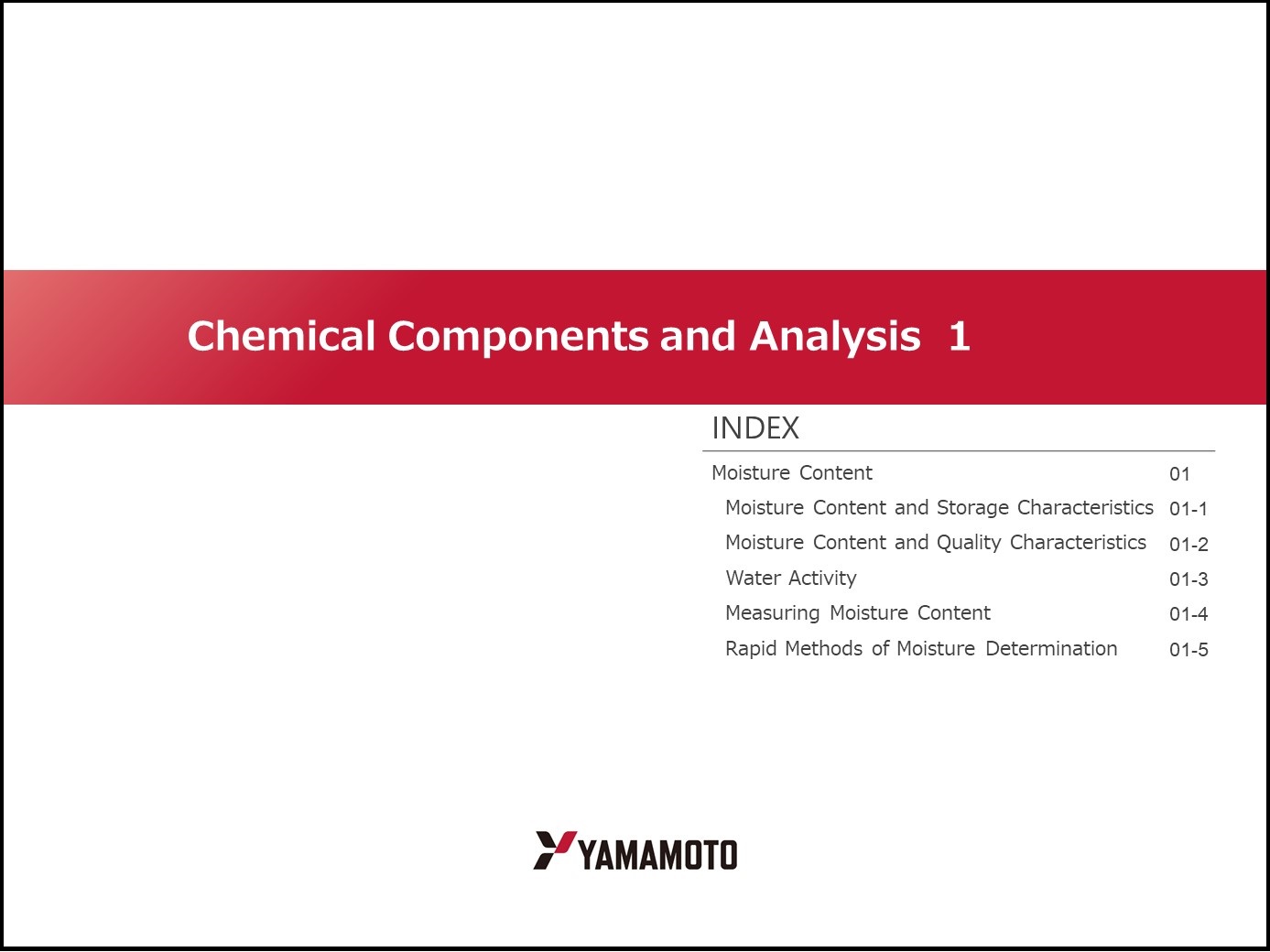58. Chemical Components and Analysis 1
- INDEX -
Moisture Content
Moisture Content and Storage Characteristics
Moisture Content and Quality Characteristics
Water Activity
Measuring Moisture Content
Rapid Methods of Moisture Determination
Moisture Content
Moisture Content and Storage Characteristics
The moisture content of rice is not constant, but varies as ambient humidity changes. Accordingly, storing rice with a high moisture content under dry conditions creates the problem of losing weight due to loss of moisture.
Therefore, it is necessary to measure the moisture content of rice upon warehousing, storing, and shipping.
Normally, rice is stored under a controlled humidity of approximately 70% to keep the moisture of rice constant.
According to the Food Institute of the Ministry of Agriculture, Forestry and Fisheries in Japan, moisture and desorption affect moisture content, producing hysteresis.
The moisture content of rice greatly affects quality deterioration during storage.
Mr. Yanase and others of the Food Research Institute have conducted storage tests at three moisture levels: 13%, 15% and 17%, and five storage temperatures: 5~10℃, 15℃, 20℃, 25℃ and 30℃, and have proven that quality deterioration increases as the moisture content increases as the moisture content and storage temperature increases
Moisture Content and Quality Characteristics
The moisture content of rice is closely related not only to storage quality but also milling characteristics and palatability of cooked rice. Cracking is more likely to occur in the milling process when the moisture content of brown rice is extremely low, and the rice would become lacerated during soaking before cooking, adversely affecting the taste of cooked rice. On the other hand, according to a milling test on rice for Japanese sake by Mr. Kumagai of the Brewing Laboratory, brown rice with an extraordinarily high moisture content would not be suitable for brewing because it is not only likely to have cracks during milling, but high rice moisture results in low water absorption.
Although less obvious the high moisture of milled rice affects moisture absorption, moisture content of cooked rice, and processed product’s moisture content during cooking and processing.
Accordingly, the moisture content of rice is considered to be extremely important for storage, milling, palatability, processing, etc.

